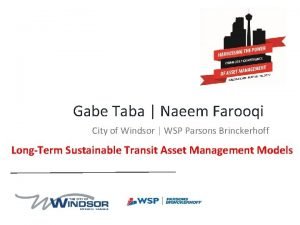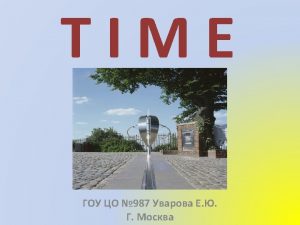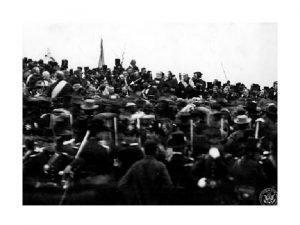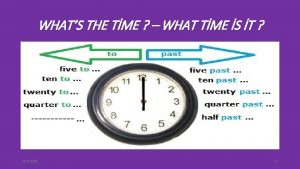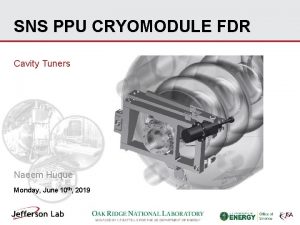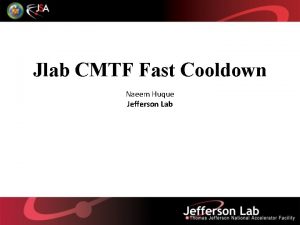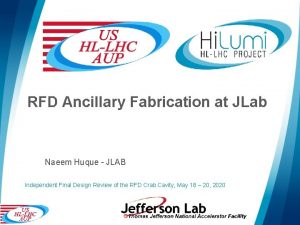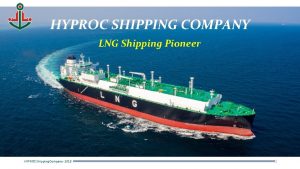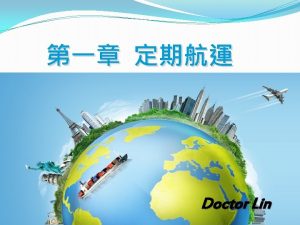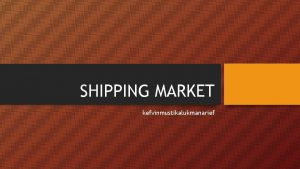SNSSNSPPU Cryomodule Shipping Naeem Huque Introduction Twenty four








- Slides: 8

SNS/SNS-PPU Cryomodule Shipping Naeem Huque

Introduction § Twenty four SNS Cryomodules were shipping 500 miles from JLab to ORNL § The same shipping system will be used to transport SNS-PPU cryomodules § Small changes to the system will be implemented to take CM design changes into account

SNS Shipping System § § § Shipping Fixture consisted of two frames, separated by 12 helical isolator springs (Aeroflex CB 1500 -15 -C 2) 1 inch thick rubber between CM and cradles on the inner frame Fixture is designed to reduce shocks by a factor of 6 Cryomodules held on to the frame by ratchetting straps Shipping assembly was fitted on a drop-trailer with air-ride suspension SNS CMs were designed to withstand: § § § Vertical: +/- 4. 0 g Beam-Axis: +/- 5. 0 g Transverse +/- 1. 5 g

SNS Shipping Tests § § § § A preliminary test was carried out at JLab using a Quarter-Cryomodule (2000) The QCM was fixed to a rigid frame, with 1 inch of rubber padding on the cradles Sensors to measure vibration and shocks QCM was cold tested after the road test After the test, vacuums and cavity passbands were unchanged One beamline flange moved 0. 3 mm (vs. +/0. 5 mm spec) All shocks were below the SNS design loads Maximum Shocks (g) Vacuum Vessel Beamline Vertical 2. 8 0. 9 Beam-Axis 1. 9 1. 3 Transverse 1. 6 1. 4

SNS Shipping Tests § § § The test was repeated with the prototype High-Beta cryomodule (2002) The CM was loaded on to the shipping fixture, and the assembly installed on a trailer fitted with Air-Ride suspension The load was driven 400 miles around Virginia The inner conductor of the FPC was restrained Maximum shocks all within design limits Shipping Fixture deemed successful 2, 5 Maximum Shocks 2, 25 2 Shocks (g) § 1, 49 1, 46 1, 5 1 0, 92 0, 71 0, 72 0, 87 0, 79 0, 52 0, 5 0 Vertical Trailer Bed Beam-Axis CM External Return End Can Lateral Supply End Can Beamline 0, 49

SNS Production Shipping § After successful road tests, SNS cryomodules shipped to ORNL at a rate of one per month § Shocks and vibration data were recorded for all shipments § High shock was recorded while loading the CM into the fixture; procedure was modified to be ‘softer’ § Highest shocks were found to be at the ORNL gate! § One cryomodule, HB 01 suffered a beamline vacuum leak during shipment § Not initially reported, and CM functioned with field emission and lower energy § The Shipping Fixture is to be modified (due to changes in End Can design) to transport 7 SNS-PPU cryomodules to ORNL from JLab in 2021

Proposed Actions for SNS-PPU § Conduct a new road test using a SNS-PPU CM § CM and its sensitive components will be fully instrumented, taking into account lessons from LCLS-II shipping instrumentation § Develop a vibration specification in addition to the shock load specifications § Modify the SNS Shipping Fixture for the new SNS-PPU CM design § Components such as springs and hardware will be replaced

Cryomodule Shipping Lessons § Install maintenance ports on vacuum vessels § Tuner access ports on LCLS-II CMs have been used for nearly everything but repairing tuners § Conduct shipping road tests prior to starting production shipments § Include shock and vibration spectra separately when creating a shipping specification § Consider sub-component testing of sensitive items (e. g. couplers, tuners, bellows) § Ensure assembly used as testing bed is identical (in sensitive regions at least) to production units § Involve industry at an early stage of shipping scheme development § In addition to paid consultants, some specialized transportation companies may provide advice as part of bidding process § Only employ companies that work with special loads § Variables such as route, speed, road conditions and weather cannot be controlled; a shipping system should be able to handle deviations
